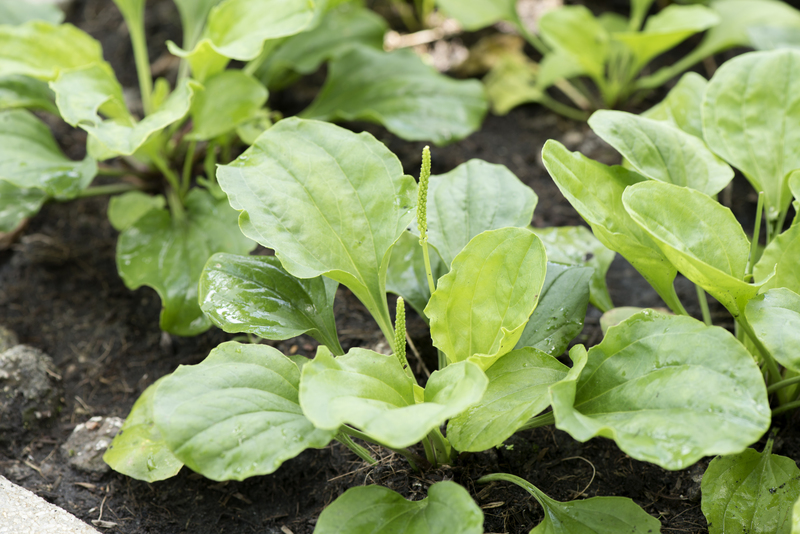Discover how sustainable gardening practices can fight climate change
Posted on 08/06/2025
Discover How Sustainable Gardening Practices Can Fight Climate Change
Sustainable gardening is more than a passing trend--it's a vital strategy in the effort to combat climate change. As our planet faces rising temperatures, erratic weather, and a loss of biodiversity, our backyards and community gardens can become small but powerful tools for positive change. Discover how sustainable gardening practices can fight climate change and make a real impact, starting right at home.
What Is Sustainable Gardening?
Sustainable gardening refers to growing plants in a way that is in harmony with nature, using resources wisely, minimizing waste, and considering the long-term health of the environment. This can mean reducing harmful chemicals, conserving water, improving soil health, and supporting biodiversity.
- Eco-friendly gardening helps reduce carbon emissions
- Organic gardening techniques avoid synthetic fertilizers and pesticides
- Low-impact gardening conserves energy and water
- Permaculture and zero-waste concepts encourage full-circle resource use
Why Is Sustainable Gardening Important for the Environment?
The gardening industry, while offering beautiful landscapes and food, can also contribute to environmental degradation. Conventional gardening often relies heavily on fossil fuels, synthetic chemicals, and excessive resource consumption. Adopting sustainable gardening measures can drastically reduce your carbon footprint and make your garden a carbon sink instead of a carbon source.

The Connection Between Gardening and Climate Change
How does gardening affect climate change? On the surface, growing plants seems inherently eco-friendly, but the details matter. Unsustainable gardening can:
- Release carbon dioxide through tilling and removing plants
- Cause greenhouse gas emissions from synthetic fertilizers and pesticides
- Lead to biodiversity loss by favoring monocultures
- Contribute to waste through plastic and non-biodegradable materials
Sustainable gardening solutions offer the opposite effect: capturing carbon, providing habitat, and reducing pollution.
Sustainable Gardening Practices That Help Fight Climate Change
Now, let's explore the key sustainable gardening strategies that fight climate change. By implementing these in your own green space, you'll be part of a worldwide solution.
1. Composting and Organic Amendments
Composting is one of the most powerful tools in sustainable gardening. When kitchen scraps, yard waste, and leaves break down, they turn into nutrient-rich humus, which you can spread onto your garden beds.
- Reduces landfill waste and methane emissions
- Improves soil structure, helping it store more carbon
- Reduces dependence on synthetic fertilizers, which are energy-intensive to produce
Applying organic matter helps the soil act as a carbon sink, locking in more greenhouse gases and enhancing resilience against drought and erosion.
2. Native and Drought-Resistant Plant Choices
Choosing the right plants is critical. Native species are adapted to local conditions, require less water, and support native pollinators.
- Need fewer inputs and less maintenance
- Support local wildlife and pollinators
- Strengthen ecosystem resilience to climate change
Drought-tolerant plants are especially important in areas facing water shortages from climate change.
3. Water Conservation Techniques
Minimizing water use is essential for climate-friendly gardening. Techniques include:
- Drip irrigation to deliver water directly to roots
- Using rain barrels to collect and reuse rainwater
- Mulching to retain soil moisture
Each drop saved means less energy spent on water purification and pumping, helping lower your garden's carbon footprint.
4. Avoiding Synthetic Chemicals
Chemical fertilizers and pesticides are derived from fossil fuels, contribute to greenhouse gas emissions, and pollute waterways. Instead, use:
- Organic fertilizers, like compost, worm castings, or manure
- Natural pest controls, such as companion planting and beneficial insects
Organic gardening practices not only protect the environment but also increase the resilience and biodiversity of your green space.
5. Encouraging Biodiversity and Creating Habitats
An ecologically balanced garden supports birds, bees, butterflies, and beneficial insects. This promotes pollination, natural pest control, and stronger plants.
- Plant a mix of flowers, shrubs, and trees for year-round habitat
- Leave some logs, stones, or bare patches for wildlife shelter
- Install bug hotels and nest boxes
Healthy ecosystems are more resilient to climate change and help stabilize weather patterns locally.
6. Reducing Lawn Size
Traditional lawns require frequent mowing, watering, and fertilizing. Reducing or replacing your lawn with native plantings:
- Lowers greenhouse gas emissions from lawn mowers
- Reduces water and chemical use
- Supports more life and stores more carbon
Consider adding meadow gardens, perennial beds, or edible landscapes to maximize climate benefits.
7. Integrating Trees and Perennials
Trees are climate change warriors. They sequester carbon dioxide throughout their life, cool the air through shading and transpiration, and provide habitat and food. Perennial plants (those living over multiple years) also build soil and trap carbon more effectively than annuals.
- Plant a variety of shade trees and fruit trees
- Use hedgerows or woody borders to create windbreaks and habitat
8. Sustainable Garden Design and Materials
Choosing materials and designs carefully:
- Opt for recycled and locally sourced materials for beds, paths, and supports
- Avoid plastics and non-degradable mulches where possible
- Reuse and upcycle old items as planters, trellises, or water catchment systems
This reduces the embedded carbon in your garden and supports a circular economy.
9. Practicing No-Till or Low-Till Gardening
No-till gardening involves disturbing the soil as little as possible. Each time we till the soil, we expose organic matter to oxygen, releasing stored carbon into the air. Benefits of no-till gardening include:
- Less carbon dioxide released into the atmosphere
- Improved soil health and water retention
- Increased habitat for soil life, like earthworms and beneficial microbes
10. Growing Your Own Food and Supporting Local Food Systems
Growing fruits, vegetables, and herbs at home is a satisfying and sustainable way to cut your carbon footprint. The average meal travels thousands of miles before reaching your plate, using significant fossil fuels along the way.
- Home gardens reduce food miles and packaging waste
- Vegetable gardens help increase personal food security
- Excess produce can be shared with friends or food banks
Key Benefits of Climate-Friendly Gardening
Shifting toward sustainable, eco-friendly gardening isn't just good for the planet. It benefits gardeners as well. Here are some notable advantages:
- Improved mental and physical health through time spent outdoors
- Greater biodiversity and wildlife sightings in your own backyard
- Healthier, tastier produce and flowers
- Lower gardening costs over time
- Increased resilience to climate shocks and extreme weather
How Community Gardens Make a Bigger Impact
When sustainable garden methods are practiced in community gardens, schools, and public spaces, the climate benefits multiply.
- More people can access fresh, healthy food
- Local neighborhoods become greener and cooler
- Community bonds are strengthened through shared purpose
- Cumulative carbon savings are much greater
Tips to Get Started with Sustainable Gardening
Making your gardening more sustainable is an ongoing process. Here's how you can start today:
- Begin composting all organic kitchen and yard waste
- Choose a few native plants to add to your garden
- Switch to "smart watering" by installing drip irrigation or collecting rainwater
- Replace a small section of lawn with wildflowers or edible plants
- Stop using chemical fertilizers and pesticides--research organic alternatives or beneficial insects
- Mulch your beds to retain moisture and enrich the soil
- Plan to plant a tree or shrub each year--it's a long-term investment in carbon sequestration
Join Local Initiatives for a Lasting Impact
Seek out gardening clubs, climate action groups, and community gardens. Collaborative efforts can amplify the effects of sustainable gardening, spreading knowledge and skills more quickly.
Your Garden as a Climate Solution
Fighting climate change does not require large-scale actions alone. In fact, millions of small, mindful steps--like those taken in sustainable gardens worldwide--can have a dramatic, positive effect.
Whether you are a novice with a tiny balcony or an expert tending a large yard, every garden can play a part in healing the environment and building a better future.
By embracing sustainable gardening practices, you're growing more than just plants--you're nurturing hope, resilience, and a real solution to climate change.

Further Resources and Learning Opportunities
- The Climate-Friendly Gardener by the Union of Concerned Scientists
- EPA: Greenacres - Landscaping with Native Plants
- Royal Horticultural Society: Sustainable Gardening Tips
- Search for local sustainable gardening workshops and programs in your area
Conclusion: Grow Greener, Act Now
The climate crisis calls for action--but it also creates an opportunity for innovation and stewardship.
Sustainable gardening offers a hands-on, practical solution that combines environmental care with personal enjoyment. By adjusting our gardening habits, each of us can reduce greenhouse gases, restore healthier soils, conserve resources, and support ecosystems under threat.
Let's all discover and embrace sustainable gardening practices that fight climate change--starting right in our own gardens, for the health of our planet and our future generations.

